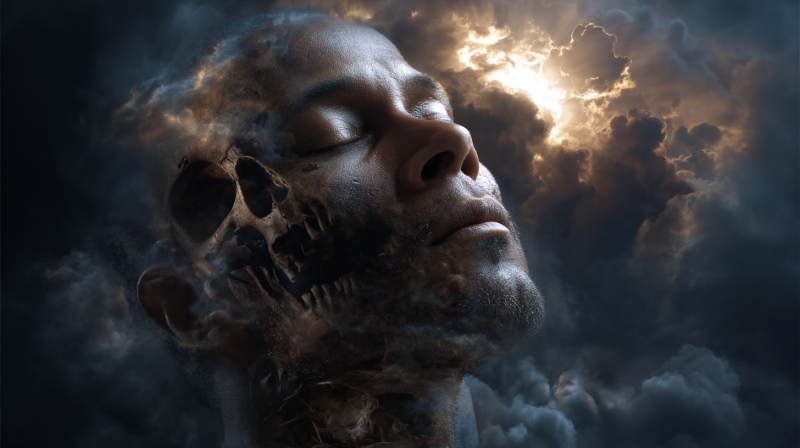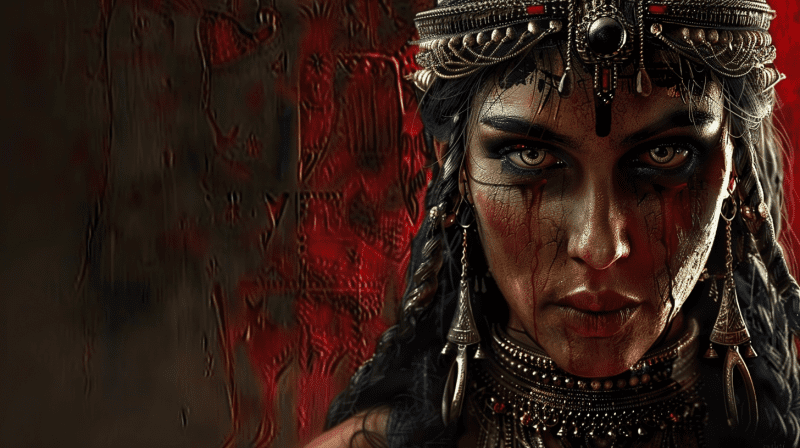Maman Brigitte is a powerful and revered figure in the Voodoo religion, particularly in Haiti and New Orleans. She is known as the Loa of the Dead and is often associated with cemeteries, graveyards, and the afterlife. Her role in Voodoo is complex, multifaceted, and deeply symbolic, embodying both the terrifying power of death and the transformative potential of spiritual rebirth.
In this article, we will explore the origins, symbolism, and rituals associated with Maman Brigitte in order to gain a deeper understanding of her significance in Voodoo religion.
Origins and History
Maman Brigitte’s origins can be traced back to West Africa, where she was known as Mami Wata, a powerful water spirit associated with fertility, healing, and transformation. When African slaves were brought to Haiti and other parts of the Caribbean, they brought with them their religious beliefs and practices, which blended with Catholicism and other elements of European culture to form what is now known as Voodoo.
She is a spirit that acts as a go-between for humans and the divine, yet she is not African. She is thought to have originated in Ireland as the Celtic goddess Brigid and the corresponding Saint Brigid of Kildare. Other names that have been used to refer to her include Gran Brigitte and Manman Brijit.
Many English, Scottish, and Irish people were forced to sign indentured service contracts during the centuries of British colonization. These servants, many of whom were women, brought their customs with them when they were moved to the Caribbean and North America. As a result, the goddess Brigid soon discovered herself traveling with the loa, who had been forcibly transported from Africa as slaves to new places. Maman Brigitte is portrayed as Mary Magdalene in several syncretic religious systems, illustrating the Catholic influence on the Voodoo faith.
Due to her British ancestry, Maman Brigitte is frequently depicted as having light skin and red hair. She is the strong goddess of cemeteries and death, and her followers offer her rum that has been spiced with pepper. She watches over graves and tombstones in return. The grave of the first woman interred in a cemetery is frequently designated with a unique cross that is supposed to belong only to Maman Brigitte.
In Voodoo, Maman Brigitte is often associated with Baron Samedi, the Loa of Death and Resurrection. Together, they form a powerful and fearsome duo, representing the twin aspects of the cycle of life and death. Maman Brigitte is often depicted as a fierce, no-nonsense woman, dressed in black and wielding a machete or other weapon. Her association with death is reflected in her role as a psychopomp, or guide of souls, who helps to usher the dead into the afterlife.
Symbolism and Attributes
Maman Brigitte is associated with a variety of symbols and attributes, each of which carries deep meaning within Voodoo religion. One of her most well-known symbols is the skull, which represents the inevitability of death and the fragility of life. The skull is often depicted as a drinking vessel, filled with rum or other alcoholic beverages, which are offered to Maman Brigitte as part of Voodoo rituals.
Another symbol associated with Maman Brigitte is the snake, which is often depicted coiled around her neck or arm. The snake represents transformation and rebirth, as it sheds its skin and emerges anew. In Voodoo, Maman Brigitte is often invoked for healing, both physical and spiritual, and the snake is seen as a powerful symbol of the transformative potential of her energy.
Maman Brigitte is also associated with fire, which represents both destruction and renewal. Fire is often used in Voodoo rituals to purify and transform, and is seen as a symbol of the intense spiritual energy associated with Maman Brigitte. She is often depicted holding a torch or other flaming object, representing her ability to illuminate the path of the dead as they journey into the afterlife.
Rituals and Offerings
In Voodoo, Maman Brigitte is often invoked as part of rituals associated with death, including funerals and ancestor worship. She is also invoked for healing, protection, and transformation, and is seen as a powerful force for spiritual renewal and rebirth.
Offerings to Maman Brigitte typically include rum, tobacco, and spicy foods, such as peppers and hot sauce. These offerings are seen as a way to appease her powerful spirit and gain her favor. Other offerings may include black candles, flowers, and images of the dead, as well as symbolic objects such as skulls, snakes, and other items associated with death and rebirth.
During Voodoo rituals, practitioners may dance, sing, and play music in order to connect with the energy of Maman Brigitte and other Loa. The rhythms of the drums, in particular, are believed to be a powerful way to communicate with the spirits and invite their presence
into the ritual space. Participants may also engage in trance-like states, in which they allow themselves to be possessed by the Loa, in order to receive guidance, healing, or other spiritual gifts.
One of the most important rituals associated with Maman Brigitte is the Fèt Gede, or Festival of the Dead. This festival, which takes place around November 1st and 2nd, is a time to honor and remember the ancestors and deceased loved ones. During the festival, offerings are made to Maman Brigitte and other Loa, in order to gain their favor and protection.
The Fèt Gede is marked by elaborate ceremonies, including processions, drumming, dancing, and feasting. Participants may dress in elaborate costumes, often incorporating the colors black and purple, which are associated with death and mourning. The festival is a time of both celebration and solemn remembrance, as participants honor the dead and seek guidance from the powerful spirits of the Loa.
In Conclusion
Maman Brigitte is a complex and multifaceted figure in Voodoo religion, embodying both the terrifying power of death and the transformative potential of spiritual rebirth. As the Loa of the Dead, she is revered and feared by practitioners of Voodoo, who seek her guidance, protection, and healing. Her symbols and attributes, including the skull, snake, and fire, carry deep symbolic meaning, reflecting the intense spiritual energy associated with her powerful presence.
Through rituals and offerings, practitioners of Voodoo seek to connect with Maman Brigitte and other Loa, in order to gain their favor and receive their guidance and blessings. Whether honoring the dead during the Fèt Gede or seeking spiritual transformation and renewal, Maman Brigitte is a central figure in Voodoo religion, embodying the rich cultural heritage and spiritual traditions of West Africa, Haiti, and beyond.





